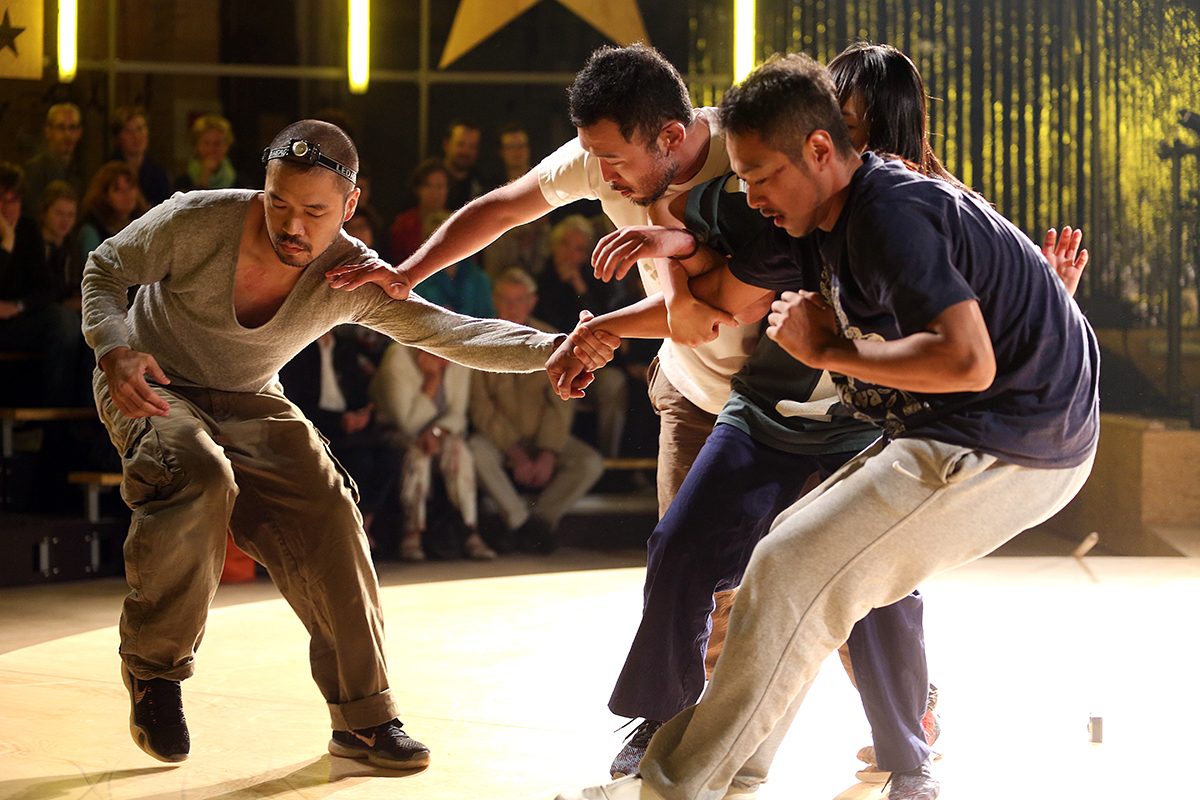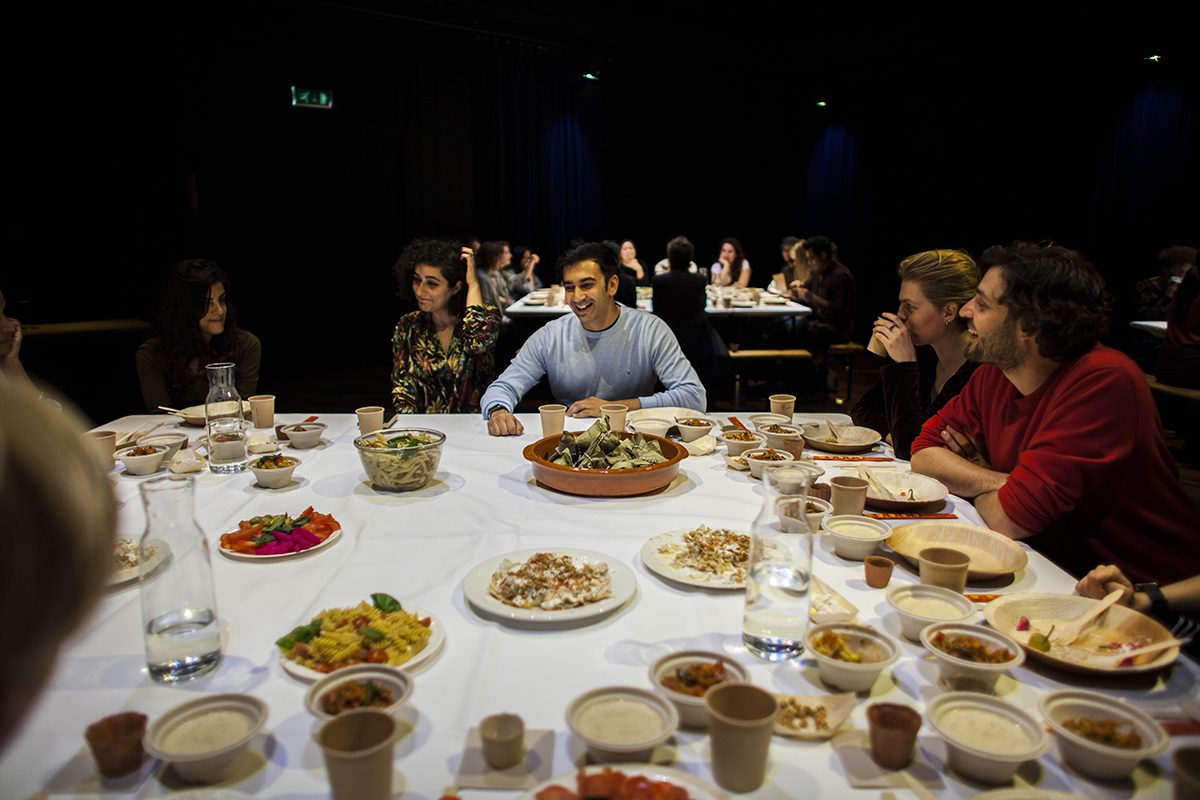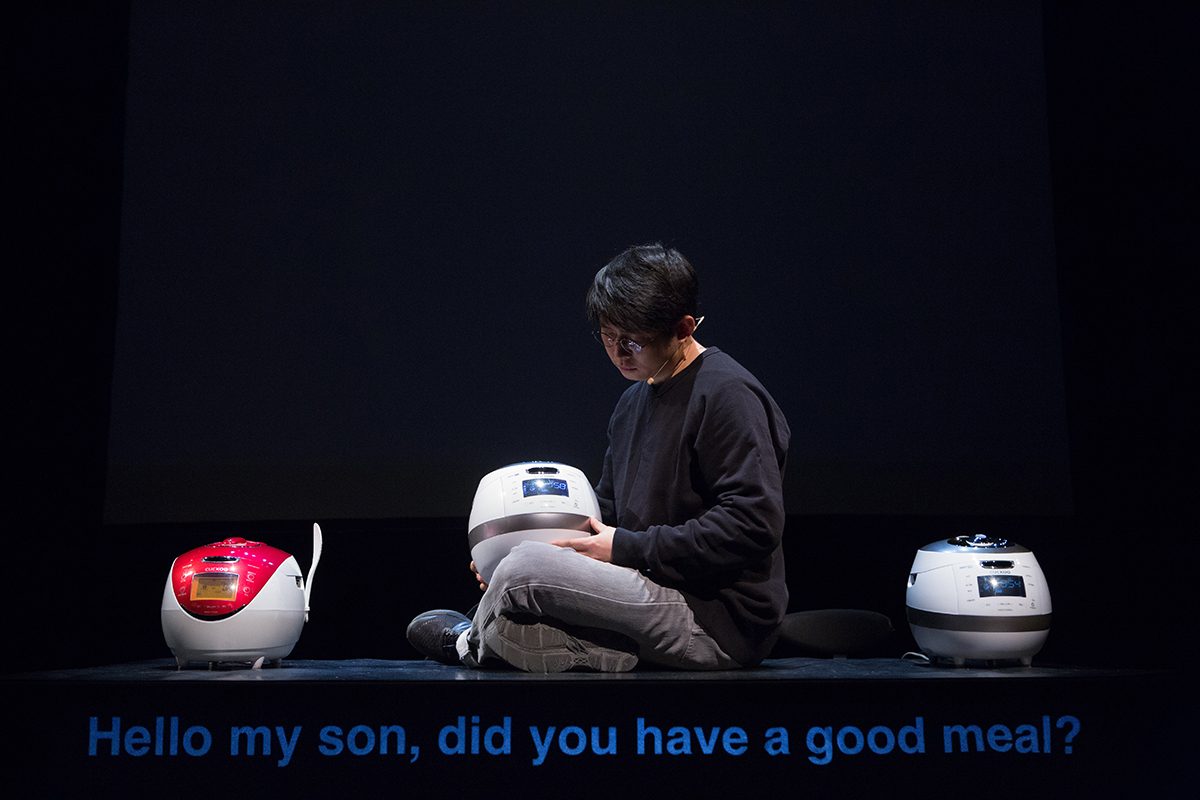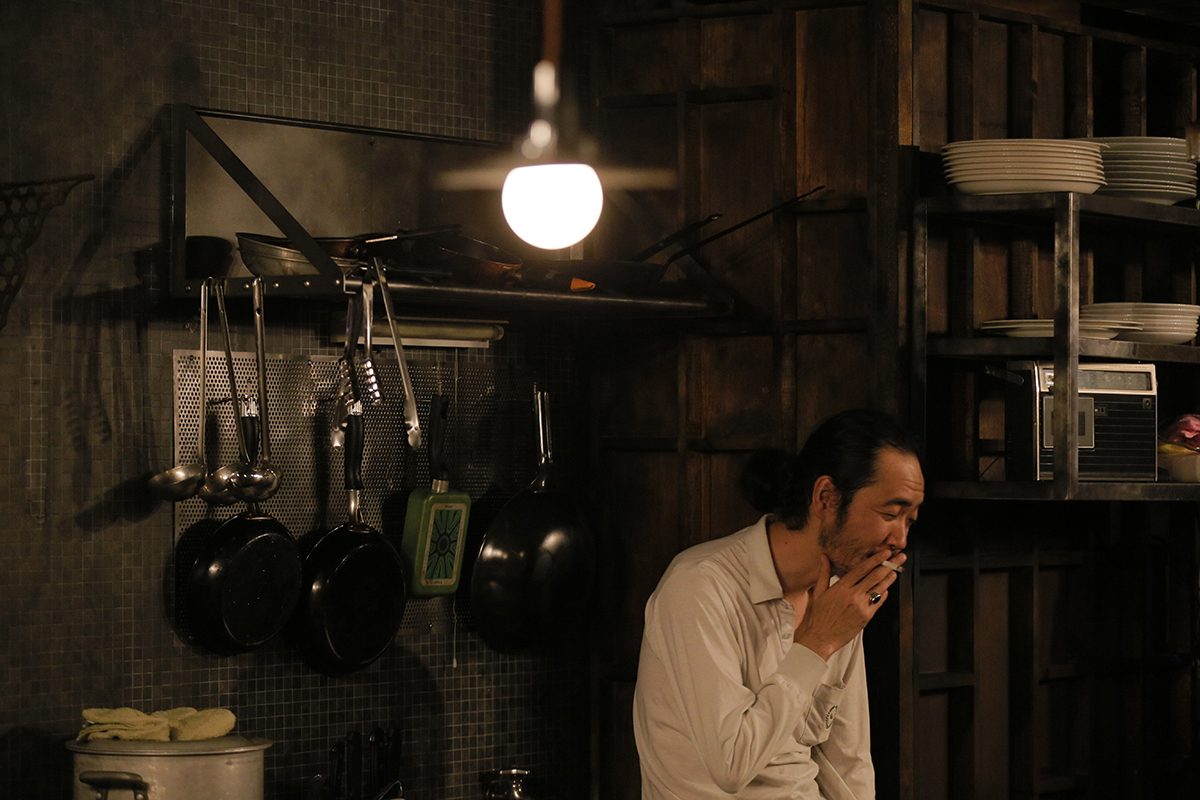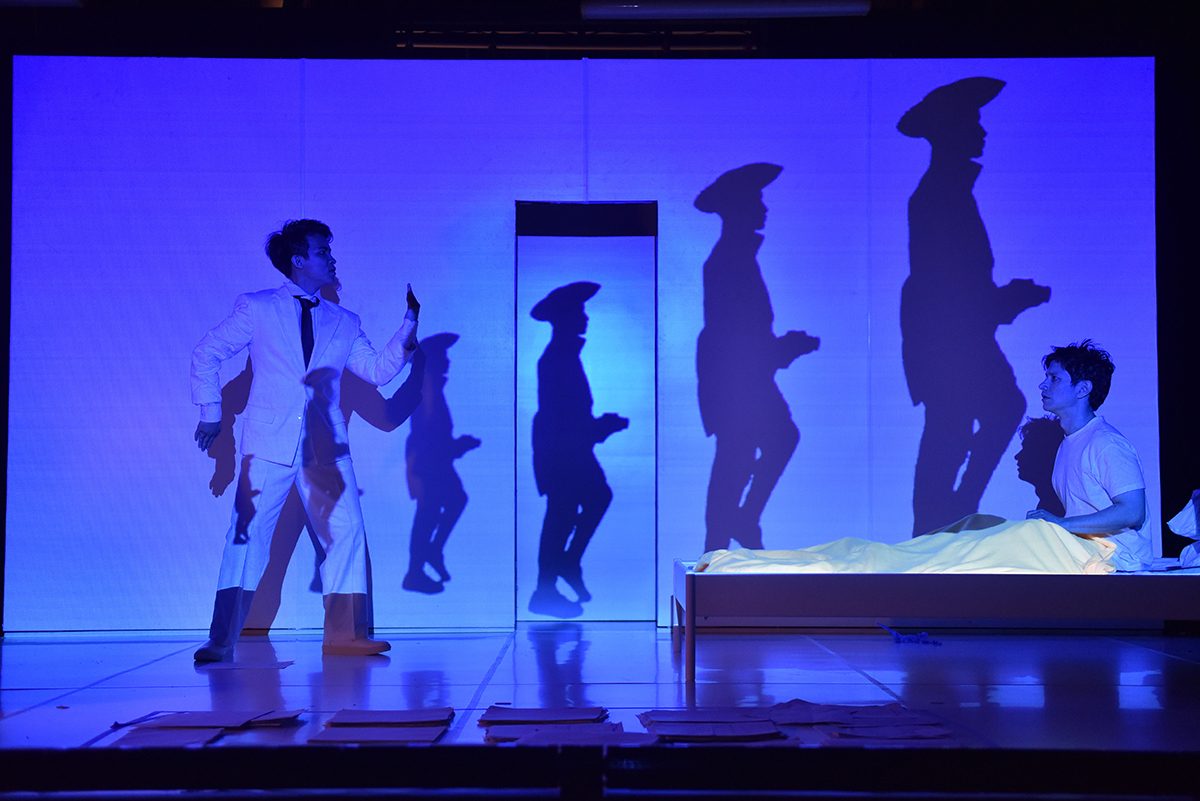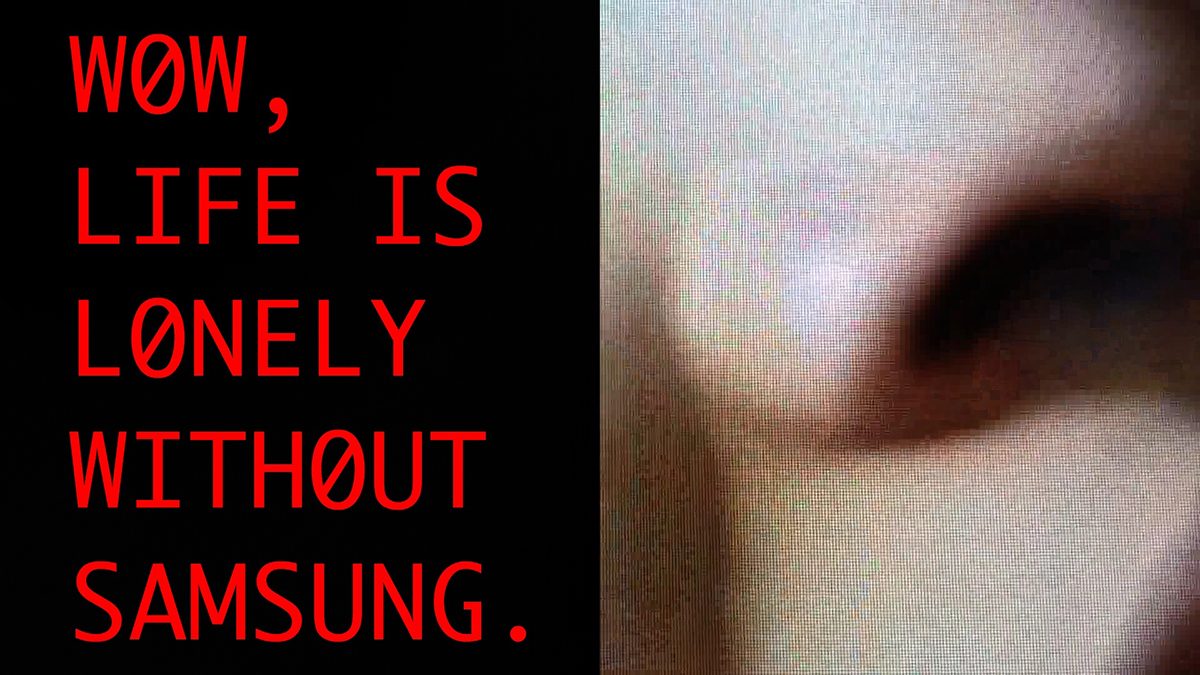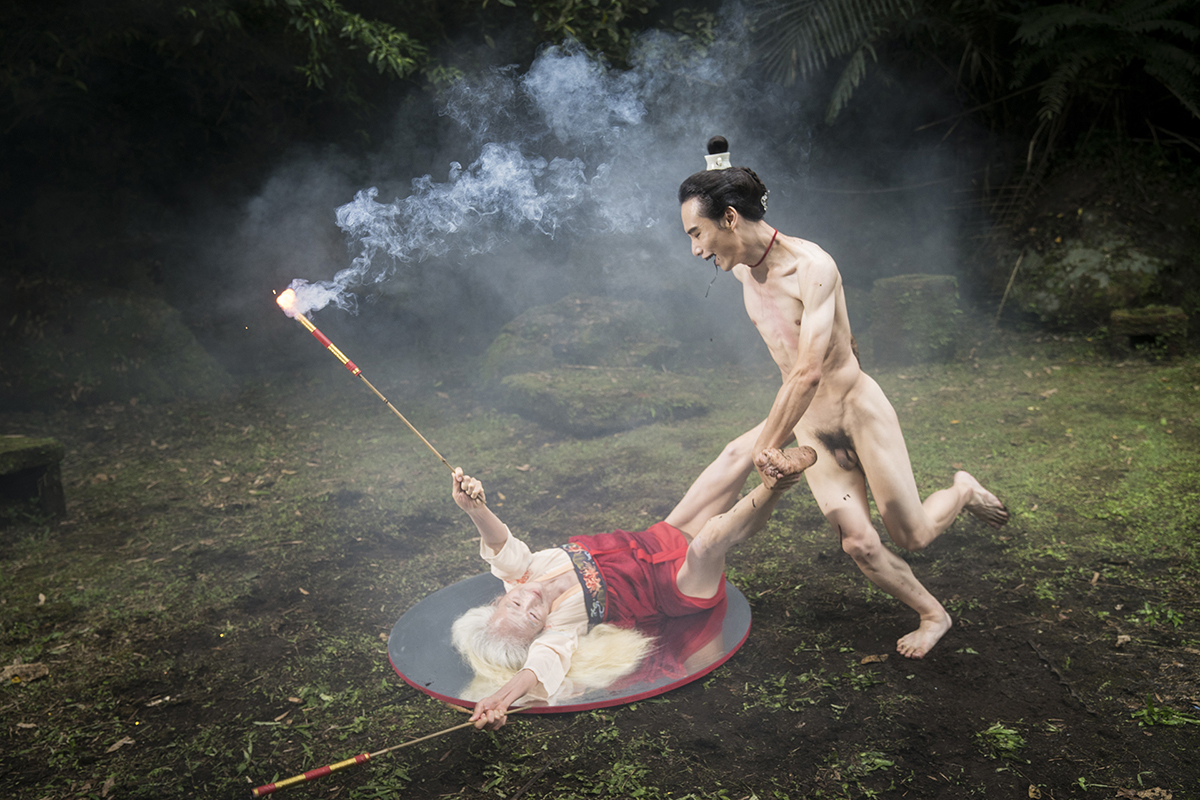
2019 OzAsia Festival: Dissolving borders
From an expansive OzAsia Festival program, his fifth, Artistic Director Joseph Mitchell and I settle on a handful of works that test the limits of performance and intensify audience experience via, variously, food, social gathering and, scarily timely, playing at being global bankers. Some are also indicative of the importance of cross-cultural collaboration—between Belgian and Hong Kong artists in one, and between Australian and Asian artists in two others—making the festival more than a showplace for ground-breaking Asian performance. It’s also a program which allows Mitchell to give expression to his considered curation, bringing back key artists from his previous festivals who have created the terrain on which newer artists he’s presenting this year have found the space to innovate. Intellectually and experientially, OzAsia is much more the sum of its parts.
First up in my conversation with Mitchell is fighting: the raw, seemingly all too risky physical battles expertly executed by the performance artists who comprise Osaka-based Contact Gonzo—‘contact’ from the aikido-influenced Contact Improvisation developed for dance by Steve Paxton in the US in the 70s, and ‘gonzo,’ for crazy. A decade ago I experienced their wrestling, shoving and trepidatious clamberings close-up with a shocked and then thrilled street crowd in Jakarta. At another time, Mitchell, beer in hand, had witnessed them on a skyscraper rooftop in the same city, accompanied by a heavy metal soundtrack.
Why pair Contact Gonzo with Adelaide’s Zephyr Quartet?
Every work Gonzo makes is so wildly different. I didn’t know where to start, so I flew [company founder] Yuya Tsukahara and other members here and said, “I’m just going to walk you round Adelaide for two or three days and introduce you to a few artists. Just tell us which venues you like and the artists you think you’d like to work with, or if you just want to bring one of your existing shows.” They said, “Anything but a [real] ‘venue’ would be great.” They’re in love with the backstage and narrow pathways and how to move people through them. Gonzo loved the ideal of counter-balance with Zephyr string quartet. Because they’ve played with big post-rock groups from Japan, heavy metal bands from Indonesia and noise groups, a string quartet sparked their imagination. And also, my impression of Zephyr is that they’re up for anything. This is a world premiere. In my view it’s contemporary dance, but some people might be more comfortable with the term ‘physical theatre.’ They’re artists who are pushing the boundaries; that’s really all that matters to me.
Let’s talk about other works in your program that push at the edges of form.
Two things. First, I wanted to look at artists who have been really well received over the past four or five years and [ask] how can we continue our audience’s relationship with them. Clearly, artists who are able to have a long-term impact in Australia can only do so because people see their work repeatedly. Secondly, how do we keep evolving the audience’s experience of the performing arts in OzAsia? There are quite a few shows where you won’t find yourself in a traditional theatre. Abhishek Thapar’s Surpassing the Beeline has the audience sitting around three dinner tables with migrants from six countries who have been working all day to prepare their national dishes. It’s a storytelling exchange around sharing a meal. The theme of the work is migration but while so much talk about migration seems to be in negative territory like [the treatment of] refugees, what this work is saying, actually, is that migration is a real part of the human experience. It’s really that simple, but I think we need that right now in a relaxed casual conversation over a meal. If we’re not migrants ourselves, we probably only need to go back one or two generations in our family to discover them.
I see that food also features in the South Korean work Cuckoo.
“Cuckoo” is the main brand of rice cooker in South Korea. Three telerobotic rice cookers talk about the history of South Korea over the last 20 years, particularly in relation to—to be very literal about it—the ‘pressure cooker’ society of that country and the challenges faced as a result of economic pressures and other extremes. Cuckoo starts out as a lecture and evolves into a dialogue between the rice cookers with the work’s maker, Jaha Koo, onstage with them and a big screen behind. The format is almost performance lecture, a form that has become reasonably prominent in the last five or six years.
Judging from performance lectures by Filipino artist Eisa Jocson and South Korea’s Geumhyung Jeong in Performance Space’s 2017 Liveworks, this is a form developing in Asia.
That’s right. I’m open to it if it really challenges the form and Cuckoo does this in a really interesting way. Jaha has a very dry delivery and lets the rice cookers fly with their personalities. There are fascinating insights about South Korean culture and some dark, unexpected turns.
The Belgian company Ontroerend Goed, true to form, will engage their audience directly in the performance. What’s the work’s connection with Asia?
When this show, £¥€$, was created, Ontroerend Goed also rehearsed—with the same director—a Cantonese-speaking company from Hong Kong who were performing in festivals in Hong Kong and Macau. I thought for OzAsia we should get half the cast from each of these companies and bring them together. We’ll basically have half the tables run by the Hong Kong performers and half by the European performers. It’s a wonderfully immersive show, about the most interesting experience I’ve had in the theatre over the past year. The performers are like very neutral facilitators, basically putting the show in your hands.
At the start, you hand over say 10 dollars and they’ll give you 10 million in chips; then you have to come up with the name of your bank. The performers will then guide you through how to run it. All the odds are explained and it’s up to you if you want to roll the dice and gamble to invest and make money. In the centre there’s a World Central Bank. £¥€$ gives you huge insight into the global banking system. What if you’re in control and the odds are in your favour, how do you behave [especially] when you can’t see anything outside the world you’re in? How does the world banking system create narratives for the public which are very different from reality? I didn’t want it to end and thought about it a lot afterwards.
In terms of continuity, another show involving food comes from the company that brought the wonderful The Dark Inn to OzAsia in 2017. It was set in a very strange, remote Japanese regional hotel. In this latest work, The Dark Master, an unlikely person becomes a chef in a little café.
Again, this is really about works that veer off into different performance experiences. The premise is that a young backpacker comes into a restaurant and meets a chef who’s misanthropic but somehow still likes to cook. However, he’s decided he’s going to become a recluse and will instruct the backpacker how to cook via an earpiece; everyone in the audience puts headphones on, the chef disappears and we too hear his instructions. On top of that throughout the show there’s live cooking onstage with all the smells and atmosphere of the kitchen.
A kind of hyperrealism, as in The Dark Inn?
Yes. On top of all of that, there’s a slightly twisted, evolving narrative. Kuro Tanino is an incredible theatre-maker. I thought about programming The Dark Master because I was really keen to make sure, one, that most of the performative experiences had a certain uniqueness and, two, I was trying to find a nice balance in the fifth year of my festivals between a bunch of really new artists and some artists that everyone seems to have really admired before and whose careers we see evolving. The Dark Master fell into both of those categories.
What does this programming balance between established and relatively new artists tell us?
Soon we’ll be in 2020. It just rang a little bell in my mind. There was a really wonderful wave of artists that came through from the late 1990s and into the early 2000s who are still just as prolific and still exploring new ground today. I’m talking about artists like Akram Khan, Nitin Sawhney and Lee Mingwei (all three are in the 2019 OzAsia program) and who hit the global scene in the early 2000s and I think—and this is very much my personal point of view—paved the way for a lot more mainstream programming of multicultural stories drawing upon inter-cultural experience of a melding of heritage and contemporary performance to the point that we’re not even thinking about those things, you’re just watching really good work, which is how it should be.
And then there’s the young generation of artists who’ve really started to fly in the last couple of years, like Kuro Tanino and Miss Revolutionary Idol Berserker. Abhishek Thapar and Jaha Koo are super-hot now in the European and Asian art scenes. There’s Contact Gonzo, Omar Musa, Siro-A and the Australian Thomas Henning (ex-Black Lung) working with radical Malaysian theatre-makers TerryandTheCuz. They’ve all come to the fore but I think they’ve been influenced by the generation of artists who were pushing the boundaries in the early 2000s.
Light, an experimental performance collaboration between Thomas Henning and TerryandTheCuz, has a very particular connection with Adelaide.
They’ve been developing Light over three years. It’s about Captain Francis Light and his son, the British-Malaysian Colonel William Light [the Enlightenment-influenced designer of the layout of Adelaide]. Doing a ton of research, Thomas has found what’s been omitted in their history. Martina Rosalls, Francis’s wife and William’s mother, is only referred to in papers as “half-Portuguese,” a refusal to acknowledge her Asian heritage. There are allusions to her having been a princess in the village she was from, but the marriage ceremony wasn’t recognised by the British. Consequently, William couldn’t access his inheritance and neither could Martina; it was mysteriously taken away. Nowadays, we’re more prepared to question our nation-building history in terms of racism.
OzAsia: visual arts
As usual, the visual arts program, in part in collaboration with local galleries, complements the festival’s performance components, this year featuring notable interdisciplinary artists: Amsterdam-based Indonesian-Australian Fiona Tan and, from Taiwan, Joyce Ho, Su Hui-Yu and New York and Paris-based Lee Mingwei.
From further afield, In Sorry For Real, utilising light boxes and video, French Guyanese-Danish artist Tabita Rezaire has invented ironically telling “virtual apologies” from the West. Seoul-based duo Young-Hae Chang Heavy Industries will present their two Samsung videos, with a third commissioned by OzAsia to complete a Samsung trilogy. RealTime followers will recall Kim Machin introducing their work, with its dextrous text play and propulsive scoring, through her Multi-Disciplinary Art Asia Pacific (MAAP) festivals. Mitchell tells me that the first part of Samsung Loves Us All is about birth, the second midlife and the third, the new work, death. To explain this ‘life cycle,’ he puts the work in context: “In South Korea, you can be born in a Samsung hospital, you can have Samsung phones and get Samsung hardware your whole life and then be buried in a Samsung graveyard. It gives us a bit more insight into the impact of corporations.”
Reading the script of The Glamorous Boys of Tang, an infamous homoerotic 1985 film by Taiwanese director, screenwriter and poet Chui Kang-Chien, the widely acclaimed video artist Su Hui-Yu discovered scenes that hadn’t been realised and decided to make them himself in his own distinctively vivid style and with a slow, revealing pan. Mitchell says that the original “was about the excesses of sexual freedom and liberation, queer identity and revisiting themes from the Tang Dynasty through a part-sexualised lens of the mid-80s. The 15-minute video response, in four-panel, classic fan shape, is an amalgamation of the missing scenes and a re-interpretation of some of the existing ones, acknowledging the original but exploring the cult underground and sexual fantasies and identities of modern-day Taiwan at the same time as looking back to the sexually liberal Tang period. Su speaks about this really well, [asking], ‘Where did sex become so conservative?’” Much of the blame falls on the West. The Glamorous Boys of Tang was Winner of the Visual Arts Award at Taiwan’s 2019 Taishin Arts Awards; Joseph Mitchell was one of the judges. The freely accessible visual arts showings are a must-see part of OzAsia’s program.
You can see more of the 2019 OzAsia Festival program here. It includes Akram Khan, Nitin Sawhney, a large-scale theatre work, The Village, from Taiwan, Vessel, a collaborative dance work from Belgium and Japan, and, Japan again, the riotous Miss Revolutionary Idol Berserker who will pelt you (in a raincoat) with glitter and tofu, plus Malaysian-Australian rapper and poet Omar Musa who will perform his much praised solo reflection on his life and inspirer in Since Ali Died.
If you’re living in eastern or western Australia, you’re curious about Asian contemporary art practices rarely seen here and you’re especially open to the seductions and challenges of innovative performance, it’s time to make your way to Adelaide for a seriously distinctive festival over the next three weeks (and double the pleasure by taking in Australia’s premiere Aboriginal and Torres Strait Islander Art Event, Tarnanthi at the Art Gallery of South Australia).
–
OzAsia Festival, Adelaide, 17 Oct-3 Nov
Top image credit: The Glamorous Boys of Tang video installation, Su Hui-Yu, image courtesy OzAsia 2019


